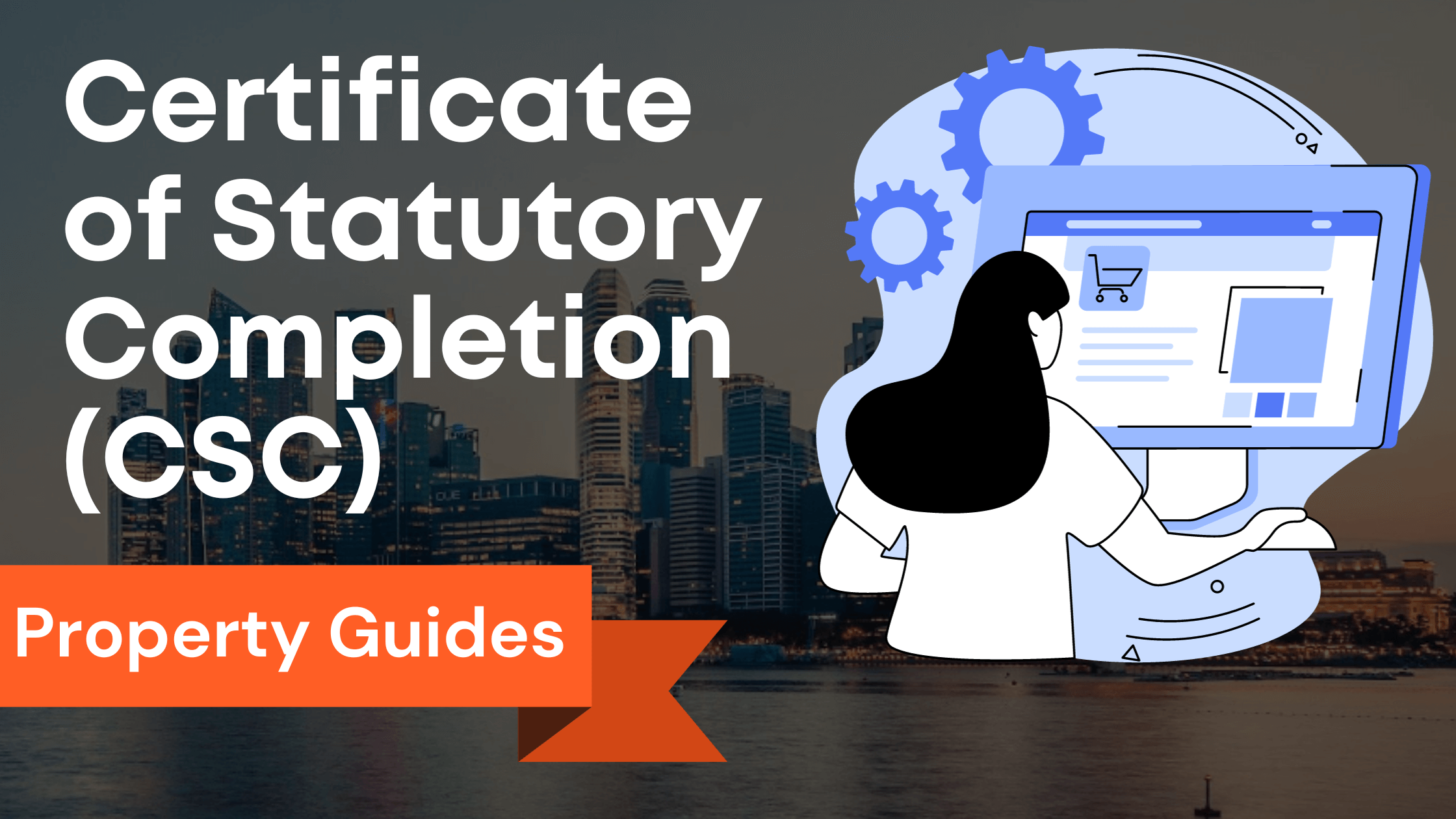
What is the Central Provident Fund (CPF)
Definition of CPF
The Central Provident Fund, commonly known as CPF, is Singapore’s social security savings scheme. It is managed by the CPF Board and is a compulsory savings scheme for all Singaporean employees. CPF aims to provide individuals with a solid foundation for a secure retirement, healthcare needs, and home ownership.
History of the CPF
CPF was established in 1955 under the Singapore government as a retirement savings plan. Over the years, it has expanded to include healthcare and housing provisions. In 2024, the CPF system underwent significant changes to enhance retirement adequacy and provide more flexible withdrawal options.
Key Features of the CPF
The CPF has several key features:
- Mandatory Contributions: Both employees and employers are required to contribute a portion of the employee’s salary to the CPF.
- CPF Investment Options: CPF savings can be invested in various investment instruments, such as stocks, bonds, and unit trusts, to grow the savings over time.
- CPF Withdrawal and Payouts: Individuals can withdraw their CPF savings after a specified retirement age, which depends on their birth cohort. Upon reaching the retirement age, CPF members can also choose to receive monthly payouts known as CPF Life.
- Home Ownership: CPF can be used to finance the purchase of residential properties, helping individuals achieve homeownership.
Key Takeaways
- CPF Definition and Purpose:
- CPF is Singapore’s social security savings scheme.
- Managed by CPF Board, mandatory for all Singaporean employees.
- Aims for secure retirement, healthcare, and home ownership.
- History and Changes:
- Established in 1955, evolved to include healthcare and housing.
- Significant changes in 2024 for enhanced retirement and flexibility.
- Key Features:
- Mandatory contributions by employers and employees.
- Investment options for growth.
- Withdrawal options and CPF Life for monthly payouts.
- Homeownership support.
- CPF Working Mechanism:
- Contributions are based on predetermined rates.
- Three accounts: Ordinary, Special, and Medisave.
- Purpose-specific use of CPF savings.
- Benefits for Employees:
- Ensures secure retirement.
- Covers healthcare needs.
- Facilitates home ownership.
- CPF Life for steady retirement income.
- Google Analytics and SEO Audit:
- Utilize Google Analytics for data interpretation.
- Conduct SEO audits to identify strengths and weaknesses.
- CPF Contribution Overview:
- Mandatory for citizens, PRs, and workers in Singapore.
- Both employers and employees contribute.
- Rates vary based on age and wages.
- Contribution Rates:
- Employer rates range from 9% to 17%.
- Employee contribution is fixed at 20%.
- Contributions ensure retirement, healthcare, and housing security.
- Withdrawal Rules:
- Eligibility at 55, with options for 40-year-olds.
- Withdrawals for various purposes, impacting CPF investment.
- CPF Schemes:
- Ordinary Account for housing and flexibility.
- Special Account for retirement needs.
- Medisave Account for Healthcare.
- Exemptions for financial difficulties.
How does the CPF work?
CPF contributions are made by both employees and employers based on a predetermined contribution rate. These contributions are credited into individual CPF accounts, which are divided into three separate accounts: the Ordinary Account, Special Account, and Medisave Account. These accounts serve different purposes, such as housing, retirement, and healthcare needs.
CPF members can also tap into their CPF savings to finance their children’s education, repay housing loans, or invest in approved investments. The CPF Investment Scheme allows members to invest their CPF savings in approved investment vehicles to potentially earn higher returns.
Benefits of the CPF
The CPF provides various benefits for Singaporean employees:
- Secure Retirement: CPF ensures individuals have the means to retire comfortably by building up their retirement savings over their working years.
- Healthcare Needs: CPF savings can be used to cover healthcare expenses, including hospital bills and long-term care through the Eldershield and Careshield Life schemes.
- Home Ownership: CPF savings can be used for down payments, monthly mortgage payments, and other housing-related expenses, making it easier for individuals to own their homes.
- Retirement Adequacy: CPF Life provides a lifelong monthly payout to ensure a steady income stream during retirement, supporting individuals in meeting their financial needs.
The CPF system is continually evaluated and improved by the CPF Board and the Ministry of Health to ensure that it remains effective in meeting the evolving needs of the Singaporean population.
In conclusion, the Central Provident Fund is a vital pillar of Singapore’s social security system, safeguarding the financial well-being of individuals throughout their lives. Through mandatory contributions, investment options, and various benefits, CPF aims to secure retirement, healthcare needs, and home ownership for all employees in Singapore.
CPF Contribution

CPF Contribution is a mandatory social security system in Singapore that provides retirement, healthcare, and housing benefits to its citizens and permanent residents.
Both employers and employees are required to contribute a portion of their wages to their CPF accounts.
Who needs to contribute to the CPF?
Contributions to the CPF are applicable to all Singapore citizens, permanent residents, and Singaporeans working in Singapore.
Both the employer and the employee have a responsibility to contribute a portion of the employee’s wages to their CPF accounts.
The employer’s contribution rate varies depending on the employee’s age, while the employee’s contribution rate is fixed.
Contributions payable are calculated based on the employee’s wages and are required to be paid by the statutory board.
How much do I need to contribute to the CPF?
The CPF contribution rates are determined based on the employee’s ordinary wages and additional wages.
Ordinary wages refer to the employee’s salary, while additional wages include bonuses, commissions, and other forms of additional income.
The total amount of CPF contributions payable is subject to a maximum amount, which is based on the employee’s monthly total wages.
The maximum amount applies to the sum of ordinary wages and additional wages, subject to an additional wage ceiling.
The CPF contribution rates for both the employer and employee are set by the government and are designed to provide uncompromised security for retirement, healthcare, and housing needs.
The contribution rates vary based on the employee’s age and wages, with higher rates for older employees to ensure that they have sufficient savings for retirement.
https://youtu.be/DCksPZlfqIg?si=Gx7RUiE-PY2sxGxJ
CPF contribution rates
The CPF contribution rates differ based on the employee’s salary and age.
The employer contribution rate ranges from 9% to 17%, while the employee contribution rate is fixed at 20% of their wages.
The employer contribution rate includes contributions to the employee’s Ordinary Account, Special Account, and MediSave Account.
The CPF contribution rates ensure that employees have a reliable source of savings for their retirement, healthcare, and housing needs.
By contributing to the CPF, employees can enjoy monthly payouts during retirement and have financial security in their golden years.
CPF contribution is a vital part of Singapore’s social security system.
It ensures that citizens, permanent residents, and Singaporeans have access to retirement, healthcare, and housing benefits.
Both employers and employees are required to contribute a portion of their wages to their CPF accounts.
The contribution rates are determined based on the employee’s wages and age, with higher rates for older employees.
By contributing to the CPF, individuals can secure their future and enjoy a comfortable retirement.
CPF Withdrawal

When can I withdraw my CPF?
If you are a CPF member aged 55 and above, you are eligible to withdraw your CPF savings.
The withdrawal date starts on 1 January of the year you turn 55.
However, for members aged 40 and above, they also have the option to withdraw up to 20% of their CPF savings.
The CPF withdrawal rules are designed to ensure retirement adequacy.
By allowing members to gradually withdraw their CPF savings, it provides them with a steady stream of income in their retirement years.
These payouts in retirement are crucial in maintaining a secure retirement and meeting basic living expenses.
It’s important to note that the Ministry of Finance periodically reviews the CPF withdrawal rules to ensure that the system remains sustainable and provides adequate retirement support for Singaporeans.
How to withdraw my CPF?
To withdraw your CPF savings, you can visit the CPF Board and make an appointment.
During the appointment, you will need to provide relevant documents such as your identification card, bank statement, and proof of address.
The CPF Board will guide you through the withdrawal process and ensure a smooth transaction.
It is worth noting that CPF withdrawals are not only for retirement purposes.
Members can also make withdrawals for various reasons such as housing, healthcare, and education.
For example, the CPF Board offers schemes like the ElderShield and CareShield Life, which provide financial support for eldercare expenses.
Additionally, CPF withdrawals have implications on CPF investment.
When you withdraw your CPF savings, it affects the amount available for investment.
Therefore, it’s important to consider your investment strategy and the potential impact on your retirement funds.
CPF withdrawal rules
The CPF withdrawal rules are governed by the CPF Act and may be subject to changes.
The CPF Act specifies that CPF savings can be withdrawn upon reaching the withdrawal age, 55 years old.
However, there are exceptions for certain circumstances, such as leaving Singapore permanently or being declared unfit to work.
The CPF Act also outlines the types of remuneration that are considered for CPF contributions.
These include regular salary payments, bonuses, commissions, and overtime payments.
However, certain types of remuneration, such as retrenchment benefits and voluntary contributions, may not be subject to CPF contributions.
In summary, CPF withdrawal rules are in place to ensure retirement adequacy and provide a steady stream of income for Singaporeans in their retirement years.
Members have the option to withdraw their CPF savings upon reaching 55 years old or make partial withdrawals if they are 40 years and above.
It is important to understand these rules and consider the implications on your retirement funds and basic living expenses.
CPF Schemes

The Central Provident Fund (CPF) is a comprehensive social security savings plan in Singapore that aims to provide financial security for its citizens in retirement, healthcare, and housing needs.
It is a compulsory savings scheme for all Singaporean and permanent resident employees and self-employed individuals.
https://youtu.be/PBnfJuufNlM?si=OrZrcyp7qhqFVVPb
Ordinary Account (OA)
The Ordinary Account (OA) is one of the three accounts under the CPF scheme.
It primarily serves as a platform to save for housing, but it also provides flexibility for other purposes.
Employees and employers make monthly contributions to the OA, based on a percentage of the employee’s ordinary wages, up to an ordinary wage ceiling.
In addition to mandatory contributions, individuals can also make voluntary contributions to the OA to accumulate more savings for other expenses.
The amount of CPF in the OA can be used for various purposes, including paying for housing expenses, investments, education, and managing day-to-day living expenses.
CPF Board provides various schemes and services to help individuals manage their expenses with OA, such as the Home Protection Scheme (HPS) and CPF Investment Scheme (CPFIS).
Special Account (SA)
The Special Account (SA) is another account under the CPF scheme.
It is designed to help individuals accumulate savings for their retirement needs.
Additional wages beyond the ordinary wage ceiling are channeled into the SA.
The total amount in the SA is exempted from withdrawal until the individual reaches the payout eligibility age, which is currently set at 55.
The SA provides individuals with a secure retirement fund, ensuring a steady stream of income during their golden years.
The Ministry of Manpower sets regulations to safeguard the SA, ensuring that individuals have a reliable and sustainable source of retirement income.
Medisave Account (MA)
The Medisave Account (MA) is specifically allocated to cater to an individual’s healthcare needs.
It aims to help individuals set aside funds to pay for hospitalization expenses and other medical expenses.
Contributions payable to the MA are based on a percentage of the individual’s income.
The MA forms the foundation for healthcare financing in Singapore and plays a vital role in providing health insurance coverage.
Individuals can use the MA to pay for their medical bills and contribute to Medishield Life, a national health insurance scheme.
Exemptions are available for those who are unable to contribute to the MA due to financial difficulties, ensuring that no one is left without access to healthcare.
The CPF Board actively manages and oversees the CPF system to ensure that Singaporeans have a secure and reliable social security safety net throughout their lives.
The CPF schemes, including the Ordinary Account, Special Account, and Medisave Account, provide Singaporean citizens and permanent residents with a robust framework for saving for various needs such as housing, retirement, and healthcare.
These schemes play a crucial role in promoting financial security and ensuring a good quality of life for individuals in Singapore.
CPF for Employers

As an employer in Singapore, it is important to understand the ins and outs of the Central Provident Fund (CPF).
The CPF is a comprehensive social security system that provides Singaporeans with retirement, healthcare, home ownership, and asset enhancement benefits.
To comply with the CPF regulations, employers need to fulfill certain obligations and responsibilities.
Employer CPF contributions
Under the CPF Act, employers are required to make CPF contributions on behalf of their employees.
The employer CPF contribution rates vary depending on the employee’s age and income.
Both the employer and employee are responsible for making these contributions, which are based on the employee’s wages, including bonuses and allowances.
It is important for employers to stay up to date with the latest CPF contribution rates as they may be subject to changes.
Failure to comply with CPF contribution obligations can lead to penalties and other legal consequences.
Employers should regularly review their CPF contributions payable to ensure compliance with the law.
Certain categories of employees, such as part-time employees, foreign employees, and employees earning less than a specified amount, may be exempted from employer CPF contributions.
Employers should familiarize themselves with these exemptions to avoid any unnecessary contributions.
CPF contribution deadlines
Employers must ensure that CPF contributions are made on time.
The CPF contribution deadlines are typically on the 14th of the following month after the wages are paid.
For example, if the wages are paid in January, the CPF contributions must be submitted by the 14th of February.
Failure to meet these deadlines may result in late submission penalties.
It is especially crucial for employers to pay attention to CPF contributions for employees who are turning 55 years old.
Singaporean employees who turn 55 are eligible for the CPF LIFE scheme, which provides them with a monthly payout for life upon retirement.
Employers need to ensure that these employees’ CPF contributions are sufficient to support a secure retirement.
Employers should familiarize themselves with the reporting timelines and late submission penalties to avoid any compliance issues.
The CPF Board and the Ministry of Finance closely monitor employers’ CPF contribution practices to ensure retirement adequacy for employees.
CPF reporting requirements
Employers are also required to fulfill certain CPF reporting requirements.
This includes reporting employees’ wages and CPF contributions to the CPF Board.
Employers must ensure that accurate and timely reports are submitted to the CPF Board.
Documentation and record-keeping are crucial for regulatory compliance.
Employers should maintain proper records of employees’ wages, bonuses, and CPF contributions.
These records may be subject to the CPF Board’s oversight, and employers may be required to provide them upon request.
The Ministry of Manpower provides guidelines on CPF reporting requirements, which employers should follow to ensure compliance.
Regular audits and inspections may be conducted by the CPF Board to ensure that employers are adhering to these requirements.
Employers play a crucial role in fulfilling their CPF obligations and ensuring retirement adequacy for their employees.
By staying informed about employer CPF contributions, contribution deadlines, and reporting requirements, employers can maintain a smooth and compliant CPF process.
This not only benefits employees but also helps employers build a positive reputation as responsible and law-abiding employers in Singapore.
Conclusion
Recap of Singapore’s Central Provident Fund
The Central Provident Fund (CPF) is a comprehensive social security savings plan designed to provide financial security for employees in Singapore.
Established in 1955, it is managed by the Central Provident Fund Board (CPFB) on behalf of the government of Singapore.
Under the CPF system, both employers and employees make monthly contributions to the CPF accounts, which are categorized into three main funds: the Ordinary Account (OA), the Special Account (SA), and the Medisave Account (MA).
The combined CPF balances can be used for various purposes, including retirement, housing, healthcare, and education.
The CPF has undergone several updates and enhancements over the years to better meet the needs of Singaporeans.
In 2016, the CPF Lifetime Retirement Investment Scheme (LRIS) was introduced, allowing members to invest their CPF savings and potentially earn higher returns.
In 2019, the CPF Investment Scheme (CPFIS) was also enhanced to provide more investment options for members.
The year 2021 marks an important milestone in the realm of employment in Singapore.
As of 1 January, changes to the Employment Act will come into effect, impacting workers and employers alike.
One notable amendment is the increase in the Central Provident Fund (CPF) contribution rates for those aged above 55 years old.
Currently, individuals who are 55 and above contribute 13% of their monthly wages to their CPF account, with 3.5% coming from their employers.
However, starting from 1 January 2023, these rates will be raised to 13.5% and 3.5% respectively.
This modification is meant to provide greater financial security and stability for individuals as they approach retirement age.
Additionally, CPF members aged 55 and above will see their CPF account savings earn an additional 1% interest per year.
This change will accrue from 1 January 2021 onwards, enabling these individuals to grow their savings at a more favorable rate.
Furthermore, it is worth noting that these amendments are due to the fact that the retirement age in Singapore will be raised to 63 by 1 July 2022 and subsequently to 65 by 1 July 2030, ow, aw, cap,1 Jan, i.e, current cpf,7.5,2023 and 1,27 May 2018, correspondingly,40 years old, due or granted,35 years.
Consequently, it is crucial for individuals to carefully plan and manage their finances, taking into account the changes in the CPF scheme and the corresponding retirement age.
By doing so, individuals can ensure a comfortable and secure retirement.
Looking at CPF Beyond 2023
As of 1 September 2023, the CPF system will see some changes that aim to provide greater flexibility and adequacy for members in their retirement years.
One significant change is the new CPF Basic Retirement Sum (BRS) and Full Retirement Sum (FRS).
The BRS will be adjusted annually from 2023 onwards to account for inflation and wage growth, ensuring that members have a sufficient retirement income.
Additionally, the CPF Retirement Account (RA) will be automatically created for members who turn 55 from 2023 onwards.
Members with a property pledge will have the option to withdraw a portion of their RA savings above the BRS, providing them with more flexibility in managing their retirement funds.
Another notable change is the extension of CPF contributions for employees aged 55 to 70.
Currently, CPF contributions cease at the age of 55, but starting from 2023, employees who continue working will have their CPF contributions and annual bonus channeled directly into their Retirement Account (RA), boosting their retirement savings.
The government of Singapore has also introduced various measures to support older workers.
For instance, the Workfare Income Supplement (WIS) scheme provides cash and CPF contributions to eligible low-wage workers aged 35 and above, encouraging them to work and save for retirement.
In conclusion, the CPF system in Singapore has continuously evolved to adapt to the changing needs and aspirations of its members.
The upcoming changes from 2023 onwards aim to provide members with more flexibility, adequacy, and support as they plan for their retirement.
By harnessing the benefits of the CPF system, Singaporeans can enjoy long-term financial security and peace of mind.
Frequently Asked Questions
What is the Central Provident Fund (CPF)?
The Central Provident Fund (CPF) is a comprehensive social security system in Singapore that enables working Singapore Citizens and Permanent Residents to set aside funds for retirement, healthcare, and housing.
What is the role of the Central Provident Fund Board?
The Central Provident Fund Board, also known as CPF Board, is the authority responsible for managing the CPF scheme. They administer CPF contributions, facilitate withdrawals, and ensure the proper disbursement of CPF funds.
What are the contributions applicable to CPF?
CPF contributions are applicable to employees and employers. Employees contribute a percentage of their monthly wages while employers contribute a matching amount to the CPF accounts of their employees.
What is the monthly salary ceiling for CPF contributions?
The CPF monthly salary ceiling is the maximum amount of monthly salary on which CPF contributions are calculated. The current monthly salary ceiling is set at [[TERMS]].
What is the annual salary ceiling for CPF contributions?
The CPF annual salary ceiling is the maximum amount of annual salary on which CPF contributions are calculated. The current annual salary ceiling is set at [[TERMS]].
What are the changes to the CPF?
The CPF undergoes periodic changes to keep pace with rising costs and the changing needs of Singaporeans. These changes aim to enhance retirement savings, provide better healthcare coverage, and ensure affordable housing for CPF members.
What is CPF LIFE?
CPF LIFE, which stands for Central Provident Fund Lifelong Income for the Elderly, is a retirement scheme that provides a monthly income for life to CPF members from the payout eligibility age until their demise.
What is the Basic Healthcare Sum?
The Basic Healthcare Sum is the estimated savings needed to cover basic hospitalization expenses in old age. It is set at [[TERMS]] and is adjusted yearly to account for inflation and rising healthcare costs.
How does CPF help with housing?
CPF allows its members to use their CPF savings to purchase homes. This includes the payment of the downpayment and monthly mortgage installments. The Housing and Development Board (HDB) is the authority responsible for providing public housing in Singapore.
At what age can CPF funds be withdrawn?
CPF funds can be withdrawn partially or fully, depending on the individual’s age and circumstances. For example, the CPF withdrawal age for retirement is 65 years old. However, there are specific provisions for early withdrawals or withdrawals under certain conditions.












